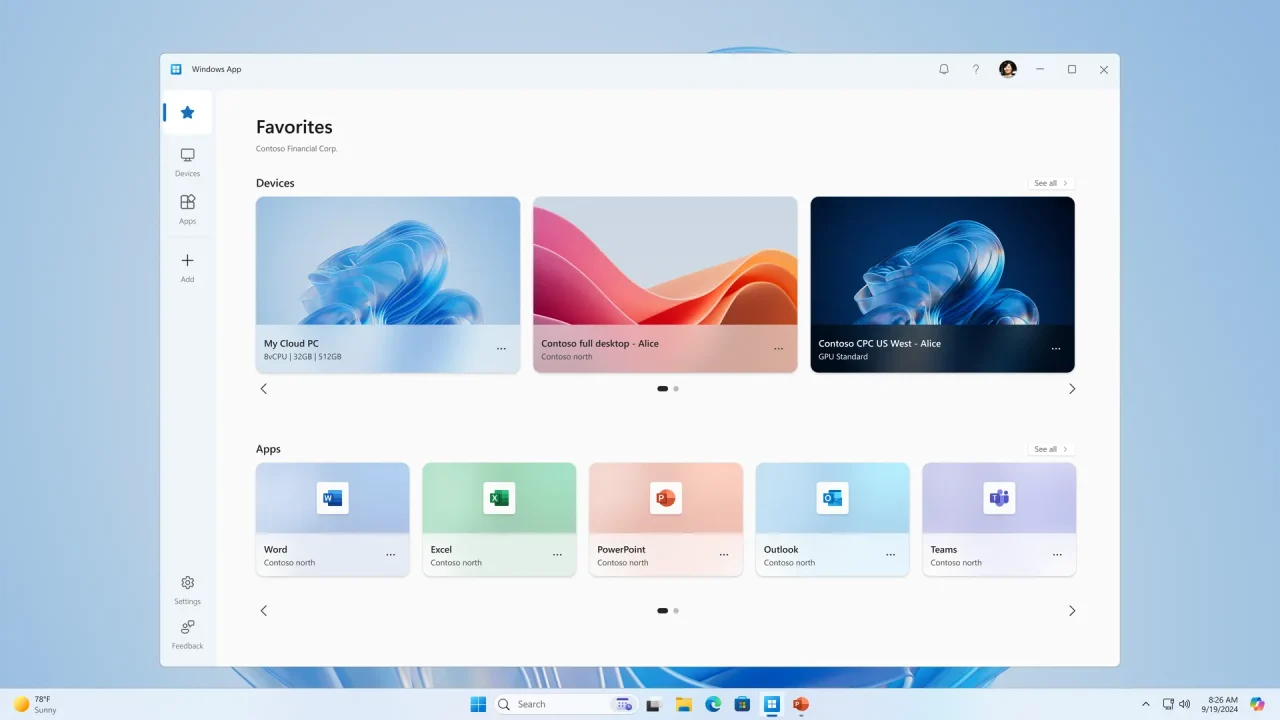Microsoft has just launched a groundbreaking new Windows App that allows users to run the Windows operating system across a variety of platforms, including macOS, Linux, and Android. This app aims to bring the Windows experience to more users, regardless of the device or OS they’re using, creating a more integrated and accessible ecosystem for both personal and professional use.

This new Windows App works by virtualizing the Windows environment, allowing users to run Windows-based applications and software without needing a native Windows machine. Whether you’re working on a MacBook, using an Android tablet, or running a Linux desktop, you can now seamlessly access the Windows interface and its applications. This is particularly useful for those who rely on Windows-exclusive software but prefer to use non-Windows devices for other tasks.
For developers, IT professionals, and cross-platform users, the Windows App offers a flexible solution to streamline workflows. Instead of switching between multiple devices or operating systems, users can now run Windows in parallel with their preferred platform, making it easier to test applications, manage networks, or perform tasks that require Windows compatibility.
The user interface in the Windows App closely mirrors that of a standard Windows PC, meaning users will feel at home whether they’re running Windows 10 or Windows 11. Microsoft has also integrated support for various Windows tools, including the Microsoft Office suite, making it an ideal tool for work environments that depend on Windows software.
In terms of performance, the Windows App is optimized to run smoothly on most devices, regardless of whether they are high-end or more basic systems. Microsoft has worked to ensure that even on mobile devices like Android tablets, the app can deliver a responsive and reliable Windows experience. For power users, it supports multi-tasking, file sharing, and cross-platform syncing, further enhancing productivity.
While this app is a significant leap forward in terms of flexibility, there are some considerations for users to keep in mind. Running a virtualized Windows OS requires a good amount of processing power and memory, which might pose challenges for older devices or those with limited resources. Additionally, the app might not be able to handle highly demanding tasks, such as gaming or 3D rendering, as smoothly as a native Windows machine.
However, for the average user who needs to access Windows applications or for professionals needing to run specific programs that are only available on Windows, this app offers an invaluable solution.
Microsoft’s decision to launch this app shows its growing focus on cross-platform accessibility, acknowledging the reality that many users operate within multiple ecosystems. As more businesses and individuals embrace diverse operating systems for different needs, this app could bridge the gap between them, making Windows more accessible than ever before.
The Windows App also marks a strategic move by Microsoft to keep Windows relevant in a world where Android, macOS, and Linux are growing in popularity. By making the Windows OS available on non-Windows platforms, Microsoft ensures that its operating system remains integral to users’ digital lives, no matter what devices they’re using.

